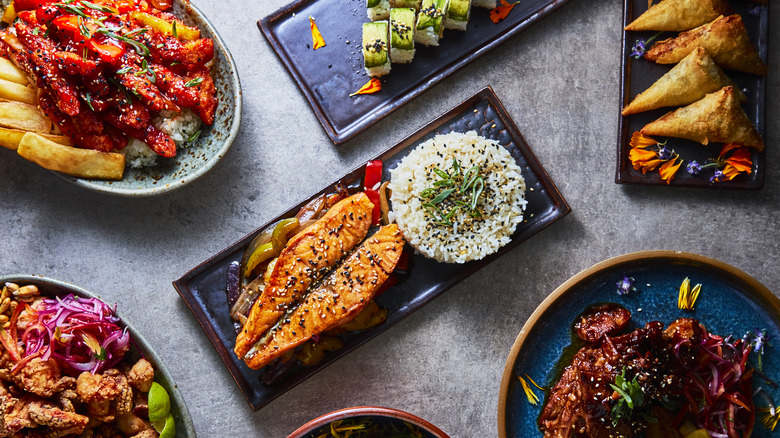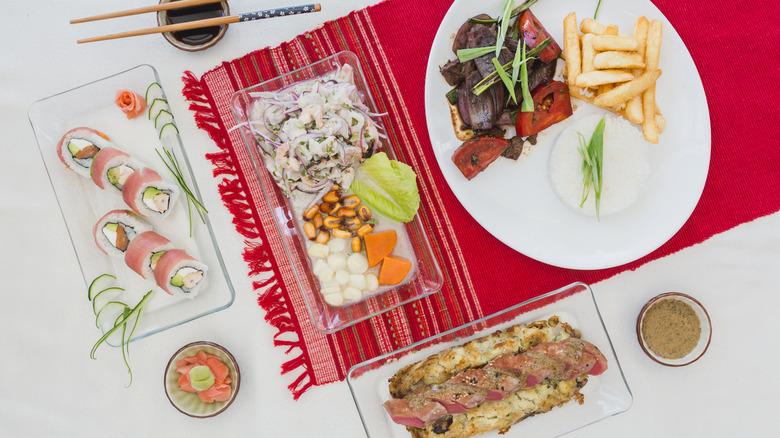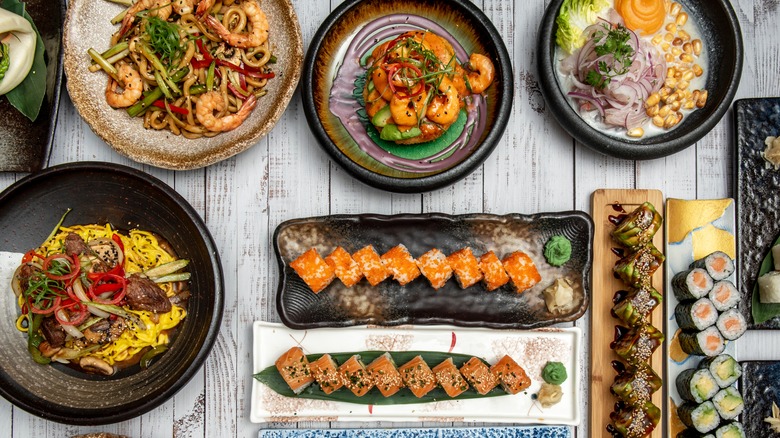What Is Nikkei Cuisine And Where Does It Come From?
While fusion food and what defines it is extremely varied, many niche fusions are overshadowed, lost in the sea of more prominent fusion cuisines such as Tex-Mex and French-Vietnamese. One such cuisine that deserves more attention is Nikkei, the marriage of Peruvian and Japanese food. These two culinary cultures make for a unique and well-paired match. Both regions are coastal, offering a large variety of seafood, as well as both featuring rice and curry-based dishes, just to name a few similarities.
Calling Nikkei a fusion food is doing the cuisine a disservice, though. It's not simply a combination of two cuisines, but rather a blending of cultures. The cuisine's namesake originates from the Japanese word meaning emigrants and emigrant descendants, in this case, particularly emigrants who ended up in Peru beginning in 1899. Japanese workers left their homes after losing their jobs to industrialization and often ended up working in sugarcane fields as part of Peru's intense indentured labor system at the time. Despite the hardship they faced, Japanese emigrants and their culture persisted, leaving a lasting impact on Peru and its cuisine.
The history of Nikkei cuisine
As Japanese immigrants settled there, South American and Japanese cultures blended in more ways than one. This includes the introduction of Japanese martial arts to Brazil, the two styles blending to create Brazilian Jiu-Jitsu. One of the most notable cultural blends, however, was cuisine. Despite its proximity to the coast, Peruvian diets often did not include seafood. That all changed with the arrival of the Japanese, taking advantage of Peru's bounty of fresh fish and helping bring seafood to the Peruvian table.
Nikkei cuisine evolved in multiple waves. First, it was defined by the blending of Japanese techniques with Peruvian ingredients. Then, the reverse, Japanese food began taking inspiration from Peruvian techniques and flavors. Today, Nikkei cuisine continues to evolve. Though it has been developing since the Japanese arrived in Peru, it was chef Mitshuhura Tsumura who helped put Nikkei cuisine on the map. His restaurant, Maido in Lima, ranked No. 5 on the World's 50 Best list in 2024 and has created significant buzz around Nikkei cuisine.
Examples of Nikkei cuisine
Its diverse array of foods is what has made Peru the culinary capital of South America. One of the most famous examples of Japanese influence on Peru is the modern ceviche recipe. Before Japanese influence, ceviche used to be overcooked with citrus, leading to the fish becoming rubbery. Applying Japanese techniques with ceviche helped create a fresher, brighter dish. Tiradito, a Nikkei dish, uses a ceviche marinade with sashimi style fish, additional Nikkei ceviche inclusions are cucumber and yuzu.
Nikkei cuisine also includes Japanese dishes that feature Peruvian ingredients like lime, jalapeño, potatoes, and corn. The blend of Japanese umami and Peruvian spice makes for perfect combinations like spicy miso and togarashi (mix of spices) with chimichurri. This cuisine also has its own Peruvian take on sushi rolls, adding spicy chilis and lime drizzles to the dish. Also featured on Nikkei menus are tempura-style Peruvian seafood, octopus with olive sauce, and a Nikkei twist on traditional Peruvian causa.


